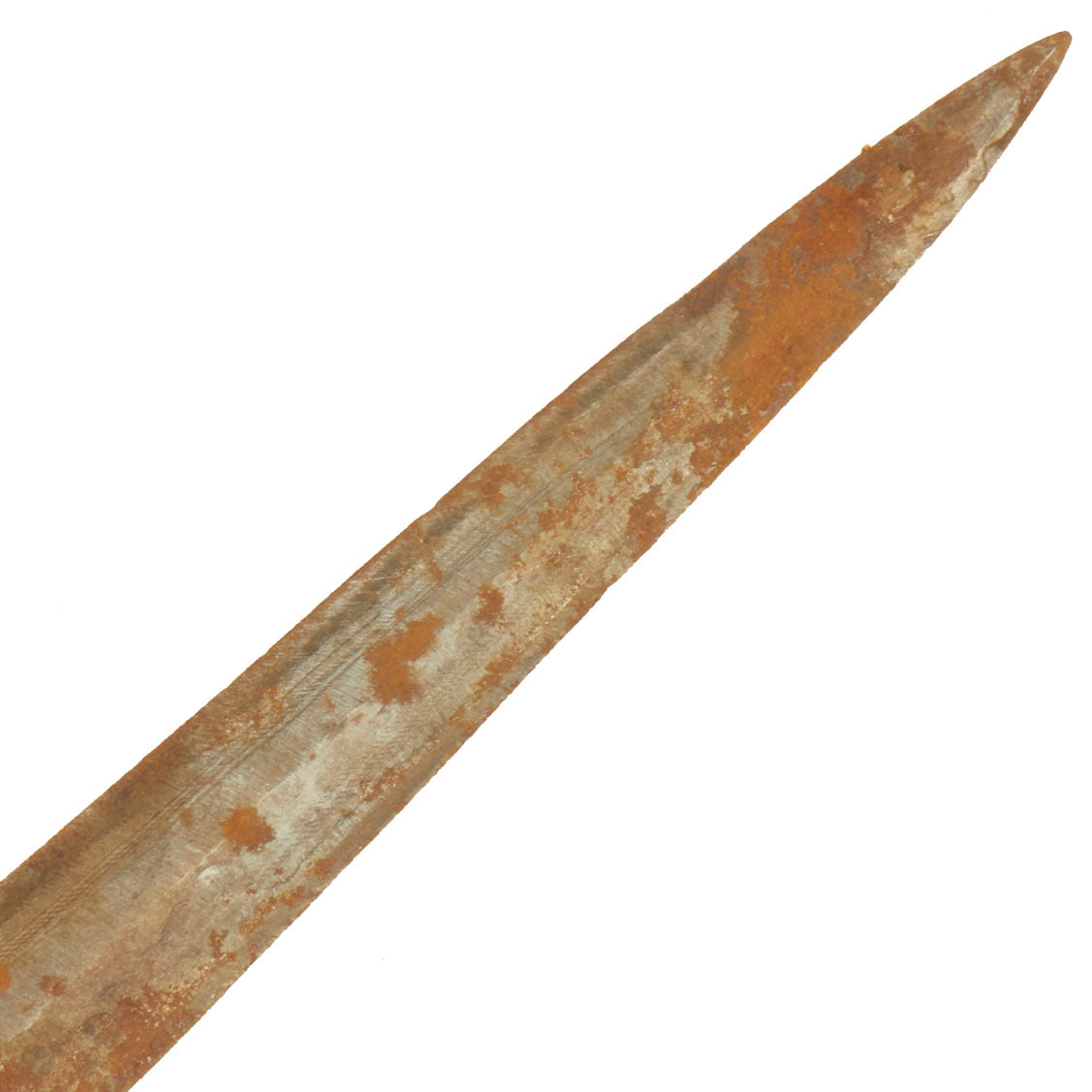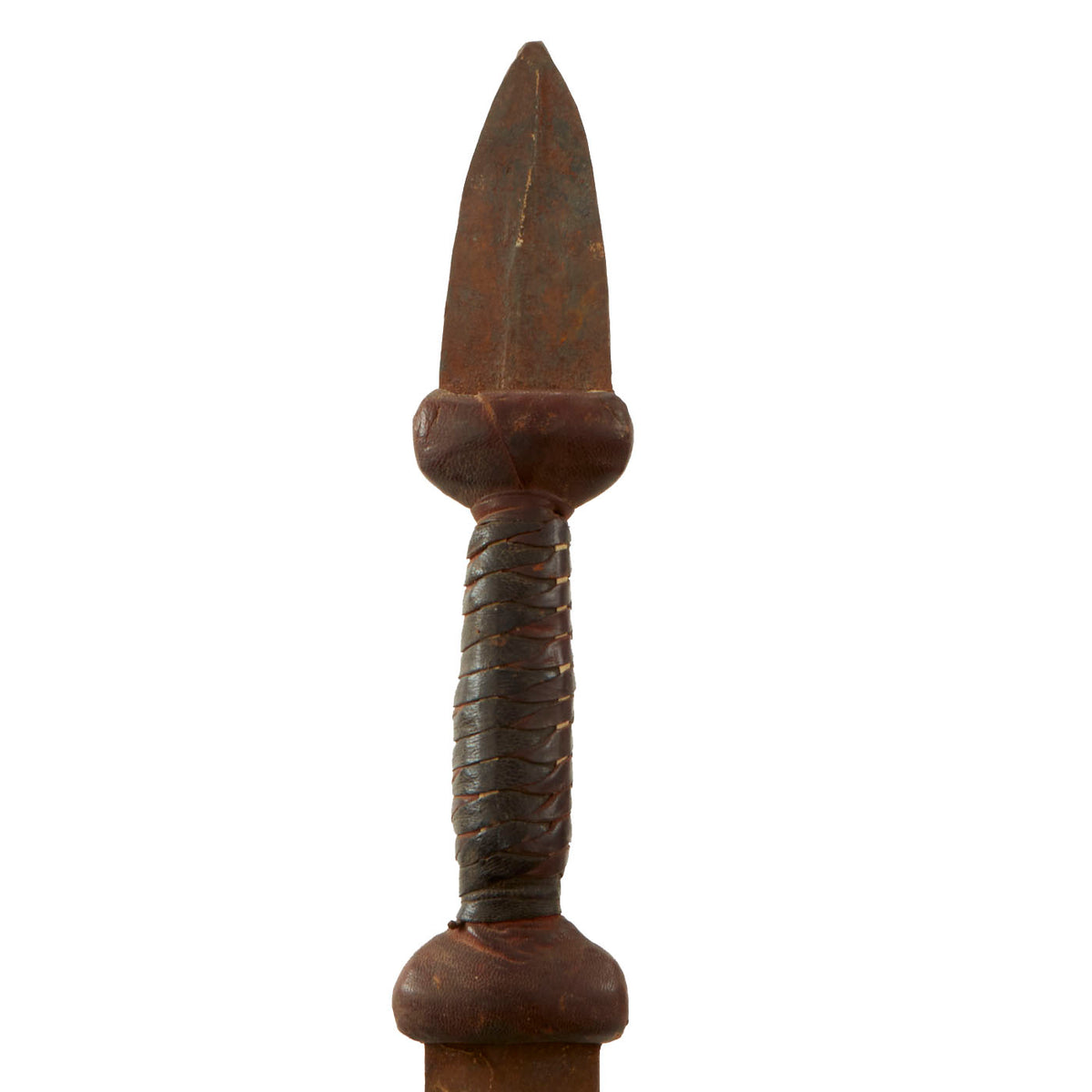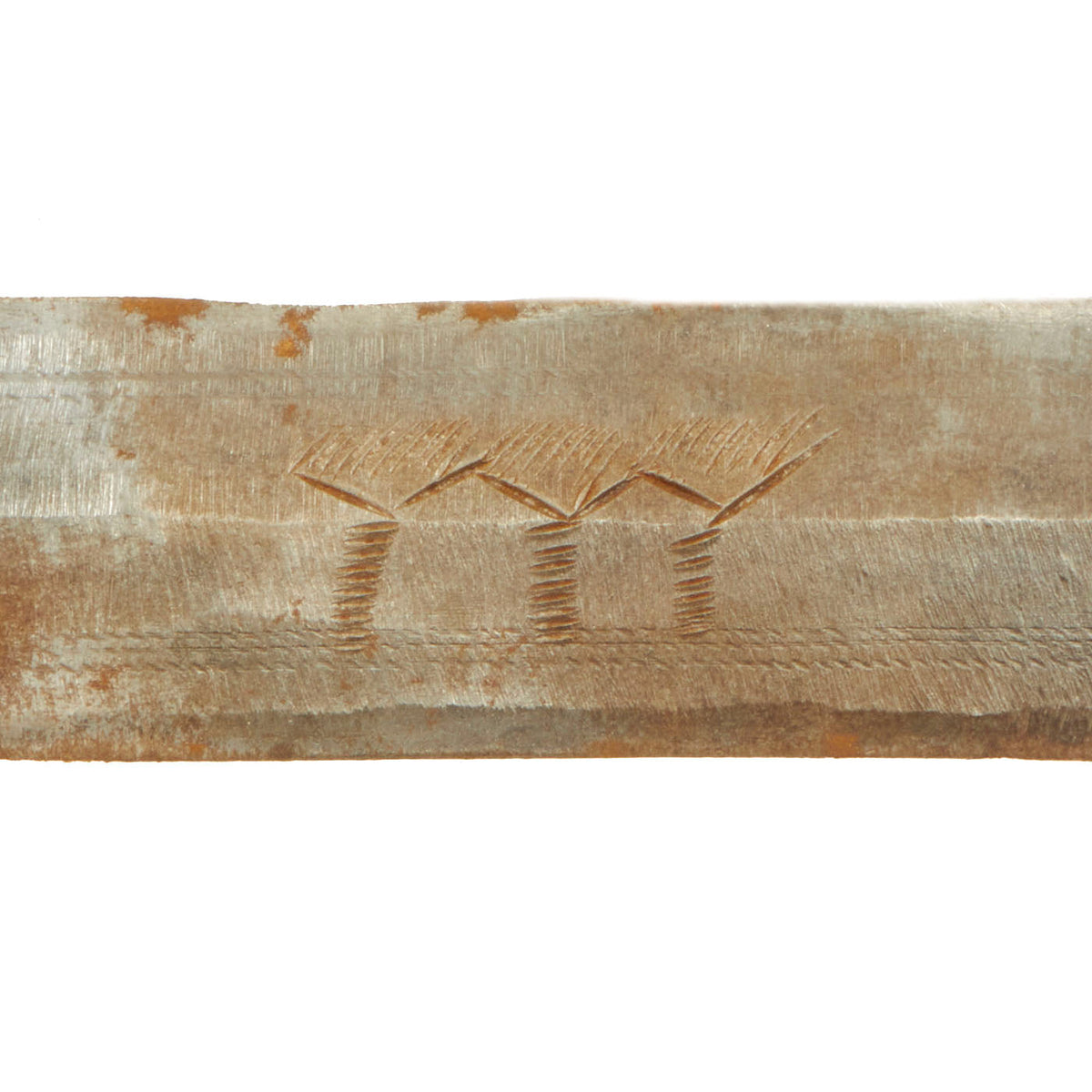Original 19th Century Sudanese Mahdi Dervish Tebu Short Sword with Leather Scabbard and Sling Original Items
$ 295,00 $ 118,00
Original item. Only One Available. The loss of General Gordon at Khartoum in 1885 was a great blow to British prestige and yet it took thirteen years for Great Britain to extract revenge at the Battle of Omdurman in 1898. The religious leader, the Mahdi, “the chosen or expected one” had died shortly after the Gordon episode and the Caliphate was now led by the infamous and exceptional brutal Khalifa, “the successor”.
These tribal natives of the Sudan were a primitive and violent people still living hundreds of years in the past. Their weapons were primitive most consisting of Jezail flintlocks, Kaskara broad swords of Crusader style and very often “arm” daggers that were strapped to the left fore arm for hand to hand fighting.
The Battle of Omdurman in 1898 was a rout, the Long Lee Enfield magazine Rifles and the Maxim machine guns made short work of the over 30,000 strong Dervish Army. The victory was received as a great Colonial achievement back in England and the returning troops treated like heroes.
This is a particularly nice Dervish sword based on the style of the Arm Dagger, known as a “Tebu” or “Tebou”, offered in very good condition and complete with the leather scabbard. The sword is 35″ inches overall, with an 27 inch blade that is double edged and tapered towards the tip. It has a leather covered grip with a second sturdy blade protruding from the pommel at the end of the tang, intended for puncturing an opponent’s skull. The leather scabbard is woven leather. Leather scabbard is in good condition with expected wear from use and age, and comes complete with torso sling still attached.
Many different cultures in Africa have developed their own styles of swords for use amongst themselves, though most of the non-Arabic designs are typically double-edged straight bladed longswords.
The West African Yoruba people used a sword known as the Ida. The blade was an elongated leaf shape with either a single or double cutting edge. Other edged weapons were made by these people, including the single-edged, eccentrically curved Agedengbe and the sabre-like Tanmogayi. The modern Machete is derived from the Ida.
In the eastern Sahel region, a long, double-edged sword known as the Kaskara was favoured. This had a straight blade and a spatulate tip. It was worn either horizontally across the back or between the upper arm and thorax. Ownership of a Kaskara was an essential possession for most men in this region, from as early as the 1500s.
In the western Sahel region, and in the Tuareg, Hausa and Fulani ethnic groups, a one-handed longsword known as the Takouba is favored. These straight blades taper along the length of the blade to a rounded point. The blade can have up to three grooves running along the blade from the hilt (known as fullers) though this is not essential to the styling.
In the northwest of Africa, especially around Morocco, the Arabic influence is evident in the curved, single-edged Nimcha and Flyssa swords. The Nimcha had a much more substantial blade than the Flyssa, a cross guard and also a knuckle guard, wheras the Flyssa was much more rudimentary.
Fast Shipping with Professional Packaging
Thanks to our longstanding association with UPS FedEx DHL, and other major international carriers, we are able to provide a range of shipping options. Our warehouse staff is expertly trained and will wrap your products according to our exact and precise specifications. Prior to shipping, your goods will be thoroughly examined and securely secured. We ship to thousands clients each day across multiple countries. This shows how we're dedicated to be the largest retailer on the internet. Warehouses and distribution centres can be located throughout Europe as well as the USA.
Note: Orders with more than one item will be assigned a processing date depending on the item.
Before shipping before shipping, we'll conduct a thorough inspection of the items you have ordered. Today, the majority of orders will be delivered within 48 hours. The delivery time will be between 3-7 days.
Returns
The stock is dynamic and we cannot completely manage it because multiple stakeholders are involved, including our factory and warehouse. So the actual stock may alter at any time. It's possible that you may not receive your order once the order has been made.
Our policy is valid for a period of 30 days. If you don't receive the product within 30 days, we are not able to issue a refund or an exchange.
You can only return an item if it is unused and in the same state as the day you received it. You must have the item in its original packaging.
Related products
Uncategorized
Uncategorized
Uncategorized
Uncategorized
Australian WWII Owen MK1 Machine Carbine SMG Custom Fabricated Replica with Sling Original Items
Uncategorized
Uncategorized
Uncategorized
Uncategorized
Armored Burgonet Helmet & Polearm from Scottish Castle Leith Hall Circa 1700 Original Items
Uncategorized
Uncategorized
Uncategorized
Uncategorized
Uncategorized
Uncategorized
Uncategorized
Uncategorized
Armoured Fighting Vehicles of the World: AFVs of World War One (Hardcover Book) New Made Items
Uncategorized
Uncategorized
Uncategorized












































































